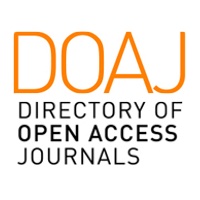SPECIES DIVERSITY OF BLACK CURRANT PESTS (Ribes nigrum L.) IN THE RIGHT-BANK FOREST STEPPE OF UKRAINE
DOI:
https://doi.org/10.31395/2310-0478-2022-1-122-127Keywords:
pests, black currant (Ribes nigrum L.), monitoring, species compositionAbstract
The article deals with clarifying the species composition of black currant (Ribes nigrum l.) pests in the Right-Bank ForestSteppe of Ukraine. During 2005-2020, 29 species of phytophagous insects from 15 families of 7 series and 2 species of phytophagous mites (Cecidophyopsis ribis Westw., Tetranychus urticae Koch.) were found in black currant plantations. The largest part (29% of the total number of detected species) in the structure of insect pests was occupied by representatives of a number of beetles (Coleoptera, among which the most common and harmful is the agrilus (Agrilus viridis L. ab aubei C-C.). Pests of the lepidopterans (Lepidoptera) were represented by 7 species from 5 families and accounted for 24% of the structure of the harmful entomocomplex. The most harmful representatives of this series are the currant clearwing moth (Aegeria tipuliformis Cl. (Synanthedon tipuliformis Cl.)) and common currant tortrix (Pandemis ribeana Hb.). The part of the series of homopterans (Homoptera) in the structure of the phytophagous complex was 17%, which were represented by five species of pests of the family Aphididae (aphids), among which the aphid currant (Aphis schneideri Born) is dominant. Phytophagous insects from the series hemipterans (Hemiptera), hymenopterans (Hymenoptera), dipterans (Diptera) and orthopteroids (Orthoptera) were represented by only 1–4 species and had no economic significance in terms of population density and harmfulness. Two species of herbivorous mites were also identified: the currant bud (Cecidophyopsis ribis Westw.) and the common spider mite (Tetranychus urticae Koch.). In terms of trophic specialization, polyphagous insects dominated, and phytophiles (dendrobiots) dominated in life forms.
References
1. FAOSTAT Crops. URL: http://faostat.fao.org/beta/en/#data/QCL
Nile S.H., Park S.W. Edible Berries: Bioactive Components and Their Effect on Human Health. Nutrition. 2014. Vol. 30. Р. 134-144.
Cosme F., Pinto T., Aires A., Morais M.C., Bacelar E., Anjos R., Ferreira-Cardoso J., Oliveira I., Vilela A., Gonçalves B. Red Fruits Composition and Their Health Benefits – A Review. Foods. 2022. Vol. 11. 644.
Djordjeviс B., Djuroviс D., Zec G., Dabiс Zagorac D., Natiс M., Meland M., Fotiriс Akšiс M. Does Shoot Age Influence Biological and Chemical Properties in Black Currant
(Ribes nigrum L.) Cultivars? Plants (Basel, Switzerland). 2022. Vol. 11(7). 866.
Державна служба статистики України. URL: http://www.ukrstat.gov.ua
Berk S., Gundogdu M., Tuna S., Tas A. Role of Maturity Stages on Phenolic Compounds and Organic Acids Contents in Red Currant Fruits. Int. J. Fruit Sci. 2020. Vol. 20. Р.
–1071.
Gopalan A., Reuben S.C., Ahmed S., Darvesh A.S., Hohmann J., Bishayee A. The health benefits of blackcurrants. Food Funct. 2012. Vol. 3(8). Р. 795–809.
Laaksonen O., Mаkilа L., Sandell M., Salminen J., Liu P., Kallio H., Yang B. Chemical-sensory characteristics and consumer responses of blackcurrant juices produced
by different industrial processes. Food Bioprocess Technol.2014. Vol. 7. Р. 2877–2888.
Lavefve L., Howard L.R., Carbonero F. Berry polyphenols metabolism and impact on human gut microbiota and health. Food Funct. 2020. Vol. 11. Р. 45-65.10. Okatan V. Antioxidant properties and phenolic profile of the most widely appreciated cultivated berry species: A comparative study. Folia Hortic. 2020. Vol. 32. Р. 79–85.
Cosmulescu S., Trandafir I., Nour V. Mineral composition of fruit in black and red currant. South-West. J. Hortic. Biol. Environ. 2015. Vol. 6. Р. 43–51.
Gagic V., Riggi L.G., Ekbom B., Malsher G., Rusch A., Bommarco R. Interactive effects of pests increase seed yield. Ecol Evol. 2016. Vol. 6(7). Р. 2149-2157.
Piotrowski W., Łabanowska B.H., Kozak M. Assessment of Infestation of Selected Blackcurrant (Ribes nigrum L.) Genotypes by the Blackcurrant Leaf Midge (Dasineura tetensi Rubs.) in Poland. Insects. 2021. Vol. 12. Р. 492.
Mitchell C., Brennan R.M., Cross J.V., Johnson S.N. Arthropod pests of currant and gooseberry crops in the U.K.: their biology, management and future prospects. Agricultural
and Forest Entomology. 2011. Vol. 13(3). Р. 221-237.
Мостов’як С.М. Шкідники чорної смородини. Видовий склад найбільш поширених і деякі прийоми зниження їх чисельності. Карантин і захист рослин. 2006. № 12. С. 14-15.
Бакалова А.В., Ткаленко Г.М., Грицюк Н.В. та ін. Ефективність сумісного застосування інсектицидів та комплексних добрив при захисті смородини чорної від сисних шкідників у Поліссі України. Карантин і захист рослин.2020. № 1(259). С. 5-8.
Cross J.V., Harris A.L., Farman D.F., Hall D.R. Assessment of the effects of crop injury by blackcurrant leaf midge, Dasineura tetensi (Rubsaamen) (Cecidomyiidae) on yield and growth in commercial blackcurrant plantations. Crop Prot. 2016. Vol. 82. Р. 51–59.
Hellqvist S. Effects of damage to individual leaves on shoot growth and berry production of black currant. Crop Protection. 2005. Vol. 24(4). Р. 343-348.
Шевченко Ж.П., Мостов’як І.І., Курка С.М. Переносники вірусних хвороб зернових колосових та їх розвиток і поширення залежно від біотичних та інших факторів.
Збірник наукових праць Уманського національного університету садівництва. 2011. Вип. 76(1). С. 24-34.
Мостов'як І.І., Дем'янюк О.С. Чинники дестабілізації фітосанітарного стану агроценозів зернових культур Центрального Лісостепу України. Збалансоване природокористування. 2020. № 2. С. 73-84.
Raven P.H., Wagner D.L. Agricultural intensification and climate change are rapidly decreasing insect biodiversity. PNAS. 2021. Vol. 118(2). e2002548117.
Skendzic S., Zovko M., Zivkovic I.P. et al. The impact of climate change on agricultural insect pests. Insects. 2021. Vol. 12. P. 440-471.
Мостов'як І.І., Дем'янюк О.С., Лісовий М.М. Екологічна структура шкідливого ентомокомплексу агроценозів зернових злакових культур Центрального Лісостепу України. Агроекологічний журнал. 2020. № 2. С. 31-39.
Ярещенко О.М., Лушпіган О.П., Терещенко Я.Ю. Рекомендації з вирощування чорної смородини, порічок та аґрусу. Київ, 2013. 31 с.
Методика державного випробування сортів рослин на придатність до поширення в Україні / Методика проведення експертизи сортів плодово-ягідних, горіхоплідних культур та винограду. Київ: Алефа, 2005. С. 161–232.
Облік шкідників і хвороб сільськогосподарських культур / В.П. Омелюта, І.В. Григорович, В.С. Чабан та ін. Київ: Урожай, 1986. 292 с.
Практикум із сільськогосподарської ентомології: Навчальний посібник / За ред. Б.М. Літвінова. Київ: Аграрна освіта, 2009. 301 с.








